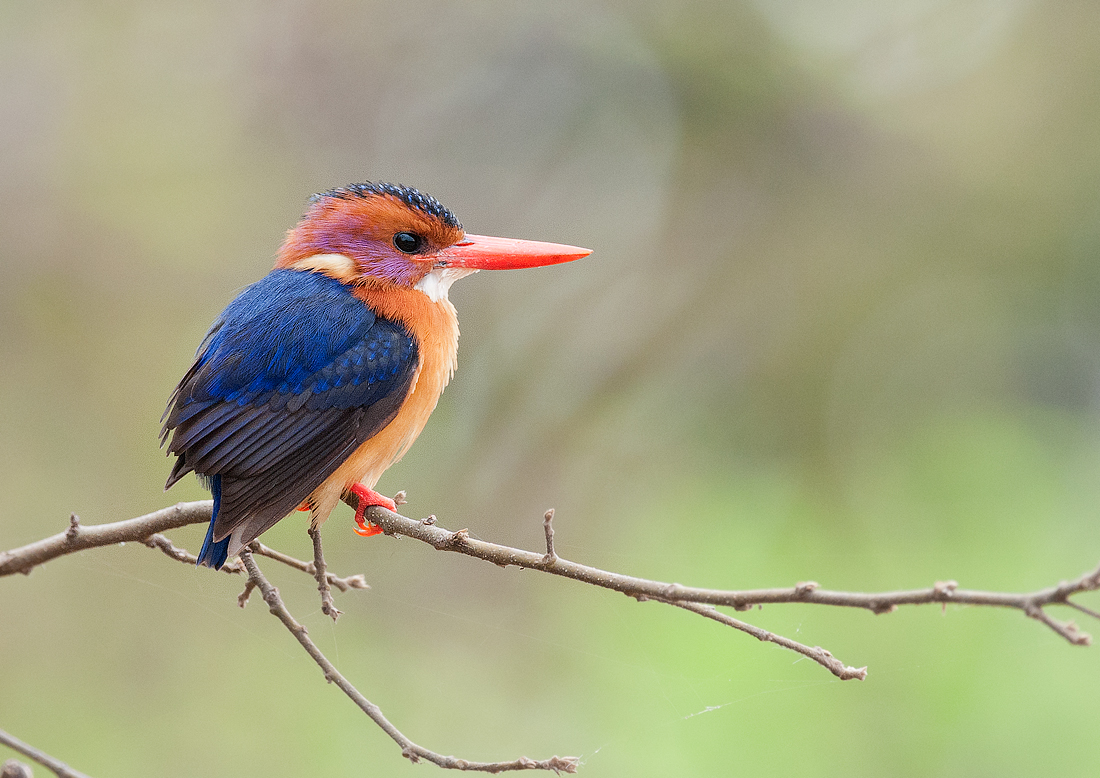
Ceyx pictus
SUBFAMILY
Alcedininae
TAXONOMY
Todus pictus Boddaert, 1783, St. Louis, Senegal. Three subspecies.
OTHER COMMON NAMES
English: Pygmy/miniature kingfisher; French: Martin-pкcheur
pygmйe; German: Natalzwergfischer; Spanish: Martin Pigmeo
Africano.
PHYSICAL CHARACTERISTICS
5 in (12 cm), 0.3–0.6 oz (9–16 g). Very small rufous kingfisher,
with blue on crown, wings and rump, white on throat and ear
spot, and lilac sides to face. Bill red, black in juvenile.
DISTRIBUTION
Resident in tropical Africa, expanding to breed in subtropics on
either side during respective summers. Most widespread small
African kingfisher, genus of six other species also widespread
across southeastern Asia and New Guinea.
HABITAT
Resident in dense forest and woodland, migrating to more
open woodland and borders of cultivated areas.
BEHAVIOR
Usually perches within 3 ft (1 m) of ground, searching for
prey, often bobbing head or pumping tail. Utters soft high-
pitched song, more often calls single, high, insect-like squeak
during rapid flight. Migrates at night.
FEEDING ECOLOGY AND DIET
Pounces on prey mainly on ground, also in air or from water.
Eats mainly insects, also spiders, myriapods, and even small
frogs and lizards.
REPRODUCTIVE BIOLOGY
Monogamous pair excavates nest tunnel about 16 in (40 cm)
long in earth bank, termitarium or aardvark burrow, sometimes
in small colonies but usually spaced within territories. Lay
three to six eggs, incubation and nestling periods each 18 days,
attended by both parents. Often raise second or third broods
during summer breeding season.
CONSERVATION STATUS
Not threatened. Widespread and common in most areas of
range.
SIGNIFICANCE TO HUMANS
None known. Numbers killed during night migration by collision
with windows.
Photo Gallery of - African pygmy-kingfisher




 Animalia Life
Animalia Life